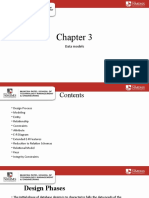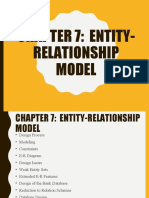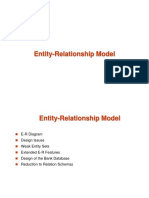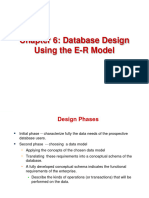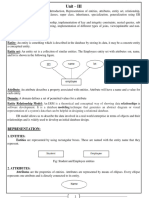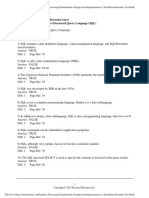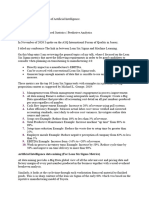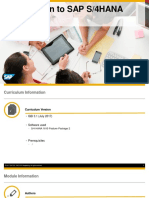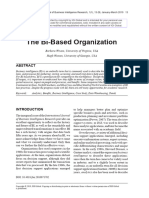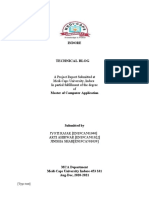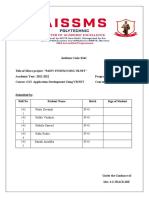0% found this document useful (0 votes)
16 views72 pagesChapter 4 - Database Using Er Model
Chapter 4 of the GIS Database course focuses on database design using the Entity-Relationship (E-R) model, detailing the design process, modeling techniques, and constraints. It outlines the phases of database design, including logical and physical design, and explains concepts such as entity sets, relationship sets, attributes, and weak entity sets. The chapter also discusses E-R diagrams and their representation, along with cardinality constraints and the reduction of E-R models to relation schemas.
Uploaded by
Dr Nurul Amirah IsaCopyright
© © All Rights Reserved
We take content rights seriously. If you suspect this is your content, claim it here.
Available Formats
Download as PPTX, PDF, TXT or read online on Scribd
0% found this document useful (0 votes)
16 views72 pagesChapter 4 - Database Using Er Model
Chapter 4 of the GIS Database course focuses on database design using the Entity-Relationship (E-R) model, detailing the design process, modeling techniques, and constraints. It outlines the phases of database design, including logical and physical design, and explains concepts such as entity sets, relationship sets, attributes, and weak entity sets. The chapter also discusses E-R diagrams and their representation, along with cardinality constraints and the reduction of E-R models to relation schemas.
Uploaded by
Dr Nurul Amirah IsaCopyright
© © All Rights Reserved
We take content rights seriously. If you suspect this is your content, claim it here.
Available Formats
Download as PPTX, PDF, TXT or read online on Scribd
/ 72







